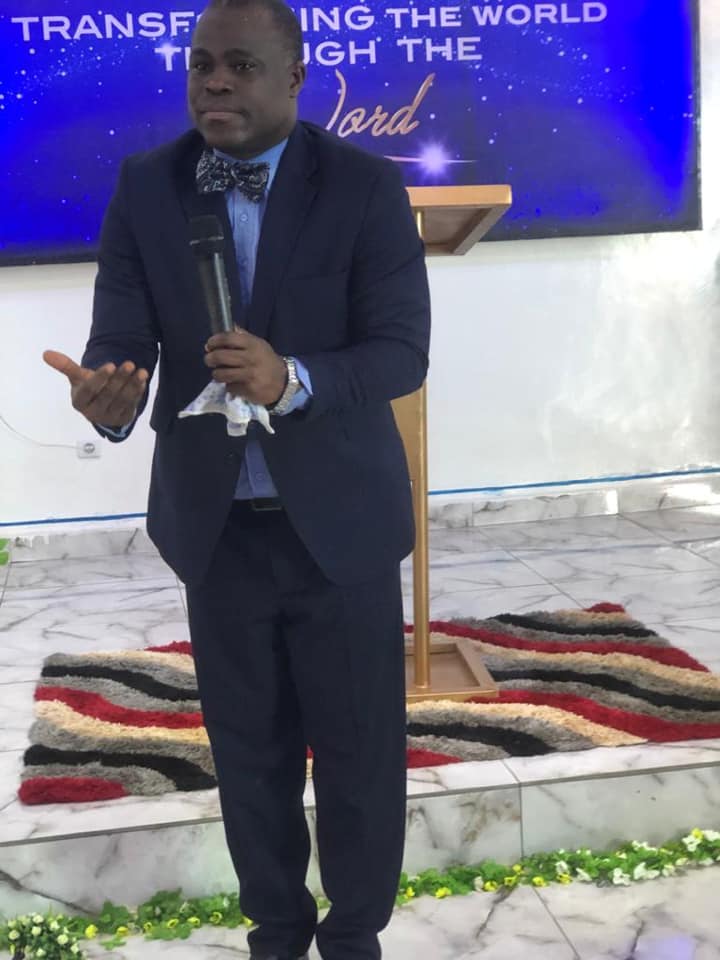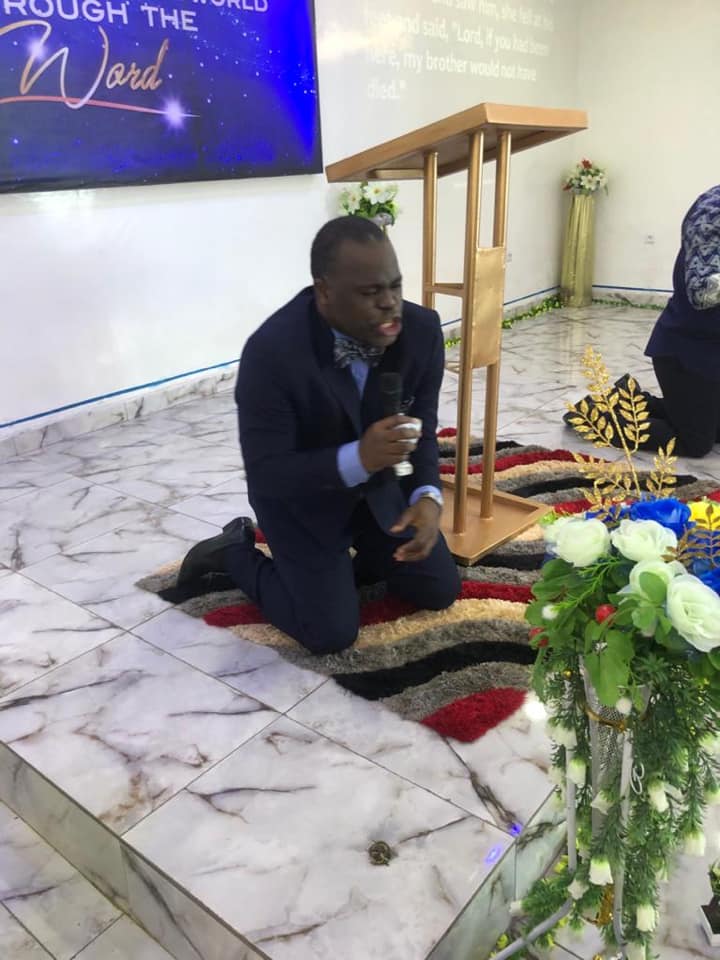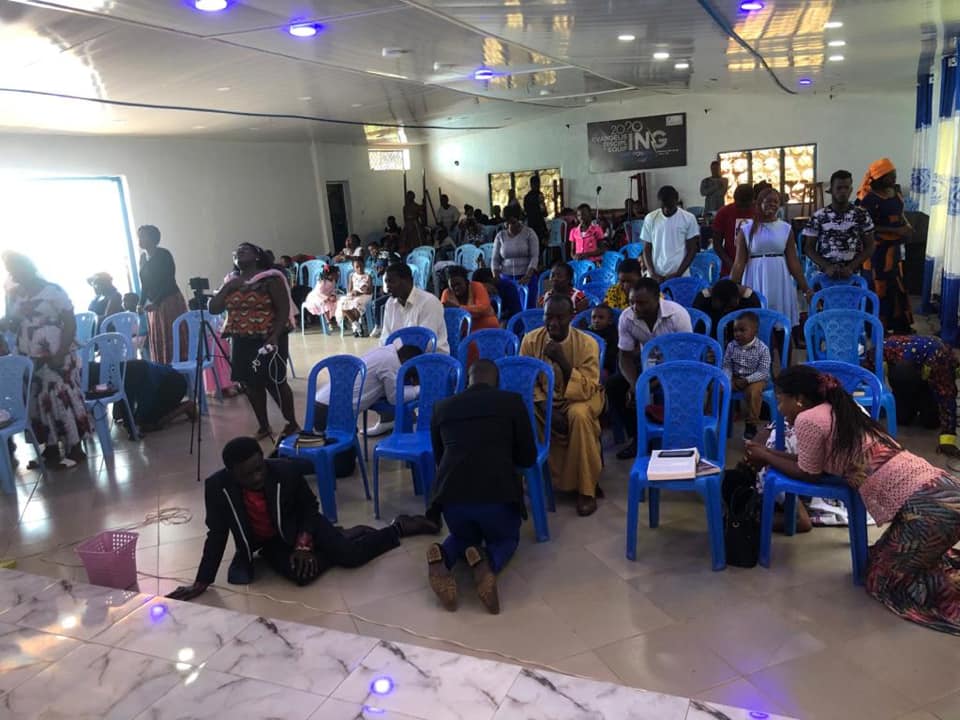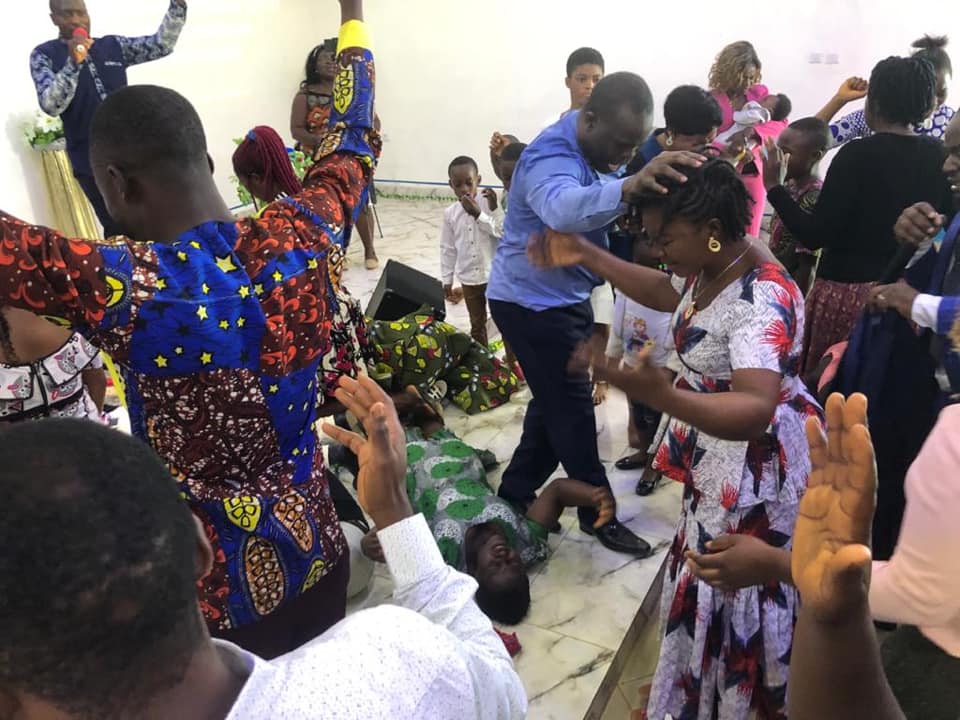
-Pastor Emmanuel Oumarou on
“Prayer That Moves God to Action”
Evangelism and Revival Ministry (EVAREMI)
Bamenda, Cameroon
Text: John 11:17-43
Focus: The importance of developing the right attitude in prayers.
Mary and Martha just suffered the loss of their brother, apparently, the unique bother. They were devastated by the situation. They had invited Jesus to come intervene some days before Lazarus passed away. But Jesus “failed” to show up on time (from the human perspective of right time) to their greatest disappointment. This shows that God does not always answer our prayers according to our time but, mostly, as per His own agenda. Little did they know that Jesus intended for them a far greater miracle for a far greater testimony. Instead of healing, He wanted them to witness a resurrection – a rare phenomenon that occurred only three times in the ministry of Jesus.
When Jesus arrived Bethany four days after Lazarus’ death, Martha and Mary rushed to Him, Martha first (v. 29), then Mary later (v. 31). When they both met Jesus (separately), they offered to Him a similar prayer with different effects on the Lord Jesus and different results. Martha’s prayer is recorded in John 11:21-22 while Mary’s is archived in John 11:23.
As noted earlier, the content of the prayer of these two ladies was almost the same but the impact of their prayer on Jesus was different. Although Jesus had come to Bethany with a definite intention to resurrect Lazarus, Martha’s prayer failed to move Him to action. However, as soon as Mary brought her petition to Jesus, He was prompted, stirred and urged to action. Mary’s prayer almost compelled Jesus to action. What explains the difference between Martha’s prayers and Mary’s? Why would both of them offer a prayer with an almost identical content and one is answered promptly and the other not? Let’s consider their prayers individually to find out more.
I. MARTHA’S PRAYER: A PRAYER CHARACTERIZED BY ABSENCE OF FAITH AND DISTRACTION.
Here is Martha’s prayer:
“Lord,” Martha said to Jesus, “if you had been here, my brother would not have died. But I know that even now God will give you whatever you ask.” (John 11:21-22 )
A look at the text shows that, though the words of Martha’s prayers were excellent, they never moved Jesus to action. The question is “why?” At least two elements of the text highlight the reason for the impotence (weakness) of her prayer. One is lack of faith. The other is distraction.
A. Absence of faith (verse 24);
In response to Martha’s petition above, Jesus promises to bring Lazarus back to life. His determination to resurrect Lazarus is recorded in John 11: 23: “Jesus said to her: Your brother will rise again.” Absence of faith is made evident in Martha’s response to Jesus after the promise: “Martha answered, “I know he will rise again in the resurrection at the last day.” This translates the fact that Martha wasn’t sure Jesus could resurrect Lazarus then. She believed that could only happen in the final resurrection of all believers. Hence, she prayed for one thing but believed in something else.
B. Distraction (Lack of Focus) (v. 27)
To reassure Martha that He intends to resurrect Lazarus in the present age not the age to come, Jesus in verse 25, tries to help Martha realize who He is (the resurrection and life) and prompt her to faith (cause her to believe). The verse reads: “Jesus said to her, “I am the resurrection and the life. The one who believes in me will live, even though they die; and whoever lives by believing in me will never die. Do you believe this?” (John 11:25-26 ).
Martha’s response is elusive and disconnected from what Jesus is saying: “Yes, Lord,” she replied, “I believe that you are the Messiah, the Son of God, who is to come into the world.” (John 11:27 ). This shows that she was not focused. Her mind was not in her prayer.
To some extent, we are like Martha. Though we articulate the content of our prayers with great theology and accuracy, we neither believe in the prayer nor are we fully involved in it. Now, if you will, let us move to Mary’s prayer and observe why her prayer had a different effect on the Lord Jesus.
II. MARY’S PRAYER: A PRAYER THAT IS BACKED IN THE RIGHT ATTITUDE
The following is Mary’s prayer:
“When Mary reached the place where Jesus was and saw him, she fell at his feet and said, “Lord, if you had been here, my brother would not have died.” When Jesus saw her weeping …” (John 11:32-33 ).
Notice that Mary’s prayer is shorter than that of Martha. This tells us that effective prayer is not always long prayer. Even though short, Mary’s prayer involves two important features that moved Jesus, almost compelling Him to action. She accompanied her prayer with (1) reverence and humility (she felt at his feet) and (2) helplessness (she wept).
A. Prayer of Humility and Reverence
The first attitude that Mary brought in her prayer is humility and reverence. She felt at the feet of Jesus. She prostrated (proskuneo) to reverence Jesus and show how small she was. This shows humility. She felt at his feet to express pain, grievance, desperation and worship at the same time. Worship in prayers means absolute confidence that God is bigger than my situation and has the ability to change it.
B. Prayer of Brokenness and Desperation
Tears in prayers often translate two things: brokenness and desperation. That’s the language Mary brought into her prayers: the language of tears, the language of contrition, the language of brokenness. Through her attitude, her posture and tears she communicated a message to Jesus that words alone cannot do. By her tears she conveyed her desperation seeking help from one she knew could help.
The effects of Mary’s tears were immediate. The Bible outlines a sequence that denotes the impact of her prayer on the Lord Jesus.
1. The Bible records that when Jesus saw her weeping, He was intensely disturbed – “deeply moved in his Spirit and troubled.” (v. 33)
2. As a result, He promptly asked where Lazarus’ body was laid: “’Where have you laid him?’ he asked” (v 34)
3. Jesus wept (v 35)
4. Again, Jesus was “deeply moved in His spirit and came to the tomb” (v. 38).
5. He commanded that the stone be taken away, v. 39. Again, note Martha’s faithless reaction here: “Lord, he stinks!].
6. He yelled that Lazarus comes out (v. 43).
After His encounter with the prayer of Mary, the text implies that Jesus acted as if He were hurrying. Mary’s prayer was so deep, so moving that it provoked the miracle or at least accelerated the process. Because Mary brought the right attitude in her prayer, the response was immediate.
Prayer is an exercise that demands more than words. It demands a compelling attitude of faith, reverence and brokenness. God does not resist genuine faith and a humble and broken spirit. That is the message Mary’s attitude teaches us this day. Right attitude in prayers is vital in making it effective.




